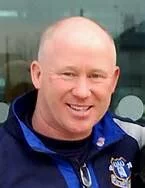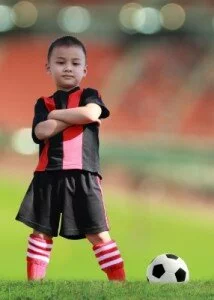Many people believe that the secret, to becoming an expert in any field is to train/practice/work in that field for 10,000 hours. There are many arguments by scholars, coaches, and parents about this topic. Here is a link to Daniel Coyle’s post regarding the 10,000 hour rule which made me want to write this post.
http://thetalentcode.com/2013/06/07/forget-10000-hours-instead-aim-for-10-minutes/
Although I believe that the 10,000 hour rule has a place in our coaching philosophy, I don’t believe that you should become obsessed with trying to get to 10,000 hours. Instead you should do as much as you’d like, as long as you are enjoying yourself. Daniel Coyle touches a little on why he feels that the training should be “sharp, focused, high-quality practice” instead and focus on quality of practice. He explains how the Barcelona youth system “La Masia” trains only 70 minutes a day…
” For example, at La Masia, the training academy that has produced the majority of Barcelona’s world-beating soccer team, the schedule calls for organized training a mere 70 minutes per day — a figure that most U.S. travel soccer coaches would scoff at as being insufficient. But here’s the thing: it’s a world-class 70 minutes: a razor-sharp, full-tilt, meticulously planned session with far more content and engagement than any mundane, exhausting three-hour practice.”
I believe that the 10,000 hour rule is, for the most part, true. What parents and players have to understand is that it will have different effects on different people. Remember we are all different. In terms of elite athletes, we have to understand that there is plenty more that factors into becoming an elite athlete. DNA, mental and physical health, environment, passion, coaching, and many other factors will play into the make up of an elite athlete. What parents have to understand is how much they can control.
For example, if Lebron James only did 5,000 hours and my next door neighbor did 10,000 hours, Lebron James was still going to be a better basketball player. Why? because he’s 6′ 9″, weighs 270 lbs, is physically gifted, is a better athlete, and LOVES basketball more than my neighbor, who is 5′ 7″, 140 lbs, and could care less about basketball. No one has control over their height, weight, or athletic ability. Parents need to understand this when they pay $1000 to play 8 games of travel soccer. Just because your coach is Jose Mourinho and you train for 20,000 hours, it does not mean you are going to become a professional athlete. Sorry. There are many variables that play into that. However you will have a lot of knowledge about training and soccer after 20,000 hours.
HOW IS IT USEFUL?
The 10,000 hour rule is useful in that it creates a reachable goal that CAN be attained and controlled. You can’t control how tall you are, how fast you can run, who your parents will be, where you will live, but you can control how often you watch soccer on TV or internet, your own motivation, how hard you want to train, etc. So as parents we need to interpret the 10,000 hour rule as a tool that helps us understand that if you want to reach the highest level possible in any sport, you have to spend a lot of time doing something related to that sport. We also need to understand that even then there is no guarantee that you will be an elite athlete, however you will have a lot of knowledge about that subject and you will maximize your talent. It’s a reminder that we will only get better by being a part of the process. Too many parents want to take a child to a camp for 3 days and expect that child to return ready for MLS, it’s not going to happen. It takes time, practice, motivation, encouragement, support, and even then the ceiling may be limited.
Tips: 10,000 hours in soccer does not mean you spend every second in structured practices. You also need time to be creative. You should watch your favorite players or teams on TV, help coach your younger brother or sister, talk about the game with your peers, get involved with “free play”. All this has to be completed in a non-pressured environment.
If you take a look at Christiano Ronaldo’s childhood, you will find out that he would sneak out of his house to go play, everyday. So he was clocking about 4-5 hours a day since he was about 6 yrs old, that’s about 2,000 hours a year. So you can see why he became one of the world’s best players. He reached 10,000 hours by the time he was 12! It also helped that he is physically gifted (some great DNA).
If you want to learn more about the 10,000 hour rule, read Malcolm Gladwell’s book “Outliers“. It’s a great book about athletes like Michael Jordan, Wayne Gretzky, and other non athletes like Bill Gates, John Rockefellar, among others. He also explains how LUCK plays a part in many athletes reaching the elite level. I will touch on this later in another post.


